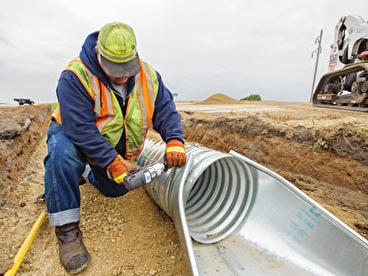Safe and Effective Tree Removal Providers
Safe and Effective Tree Removal Providers
Blog Article
Mastering Culvert Installment: Boost Your Land Drain Efforts
Effective land water drainage is an essential part of effective farming and facilities projects. Culverts play a substantial duty in handling water circulation and protecting against disintegration, making their proper installment essential. From picking the right products to executing best practices, understanding culvert setup can substantially enhance the efficiency and long life of your land water drainage system. By comprehending the ins and outs of culvert installment, you can optimize your drain initiatives and make certain lasting land use methods.
Significance of Culvert Installation
Making sure proper culvert installment is vital for preserving effective land drainage systems. Culverts play an important duty in managing water circulation, stopping disintegration, and preserving the structural stability of roads, bridges, and other framework. Correct installment of culverts aids to channel water far from roadways and buildings, lowering the risk of flooding and water damages. Furthermore, well-installed culverts aid in avoiding sediment accumulation, which can result in clogs and decreased water flow.
Proper Sizing and Positioning

Correct positioning of culverts is equally vital. Culverts must be placed at the lowest point of the area needing water drainage to make sure effective water flow.
Product Choice Tips
Choosing the ideal products is extremely important in guaranteeing the longevity and functionality of culverts for effective land drainage systems. When choosing materials for culvert setup, it is important to think about factors such as the water flow price, dirt make-up, and ecological problems of the site.
One of the most common materials made use of for culverts is corrugated metal (Tree removal). Corrugated metal culverts are durable, cost-efficient, and easy to install. They appropriate for areas with high water circulation prices and can stand up to heavy loads. One more prominent alternative is concrete culverts, which use excellent stamina and long life. Concrete culverts are ideal for areas vulnerable to corrosion or when a longer service life is desired.
For environmentally sensitive areas, plastic culverts might be chosen. Plastic culverts are light-weight, immune to corrosion, and easy to carry and install. They are likewise known for their smooth interior, which assists to preserve efficient water circulation. Additionally, in areas where natural looks site web are necessary, materials like stone or wood can be used to construct culverts that blend perfectly right into the environments. Ultimately, the choice of material must be based on an extensive assessment of the certain demands and conditions of the land drainage project.
Setup Techniques and Finest Practices
Given the important relevance of product choice in ensuring the capability and long life of culverts, the installment methods and finest practices play a crucial role in the general success of land drainage systems. Correct setup is essential to stopping problems such as leaks, falls down, or obstructions that can jeopardize the efficiency of the culvert.

Throughout installment, care should be taken to straighten the culvert properly and offer proper support to stop contortion. Backfilling must be done gradually and compacted in layers to avoid voids and negotiation. Appropriate compaction is necessary to stop moving or sinking of the culvert with time.

Maintenance and Long-Term Treatment
Executing a detailed maintenance plan is vital for making sure the durability and efficient efficiency of culverts in land water drainage systems. Routine assessments must be performed to examine for any kind of signs of damage, obstructions, or disintegration that might jeopardize the capability of the culvert. Clearing up particles such as fallen leaves, branches, and sediment is crucial to prevent clogging and preserve the flow capability of the culvert. Greenery control around the culvert location is likewise crucial to protect against roots from causing structural damages.
Regular upkeep tasks might include cleansing, fixing joints, reinforcing inlet and outlet structures, and guaranteeing appropriate slope and positioning of anonymous the culvert. Maintaining thorough records of maintenance activities, examinations, and fixings is crucial for tracking the problem of the culvert over time and intending future maintenance needs.
Verdict
In verdict, understanding culvert setup is crucial for efficient land drainage. Correct sizing, placement, product option, installation methods, and upkeep are vital variables to think about. By following best practices and implementing long-lasting treatment methods, landowners can increase their water drainage initiatives and make certain the longevity and functionality of their culverts. It is necessary to focus on these aspects to protect against water damages, disintegration, and various other pricey problems on the residential or commercial property.
Report this page